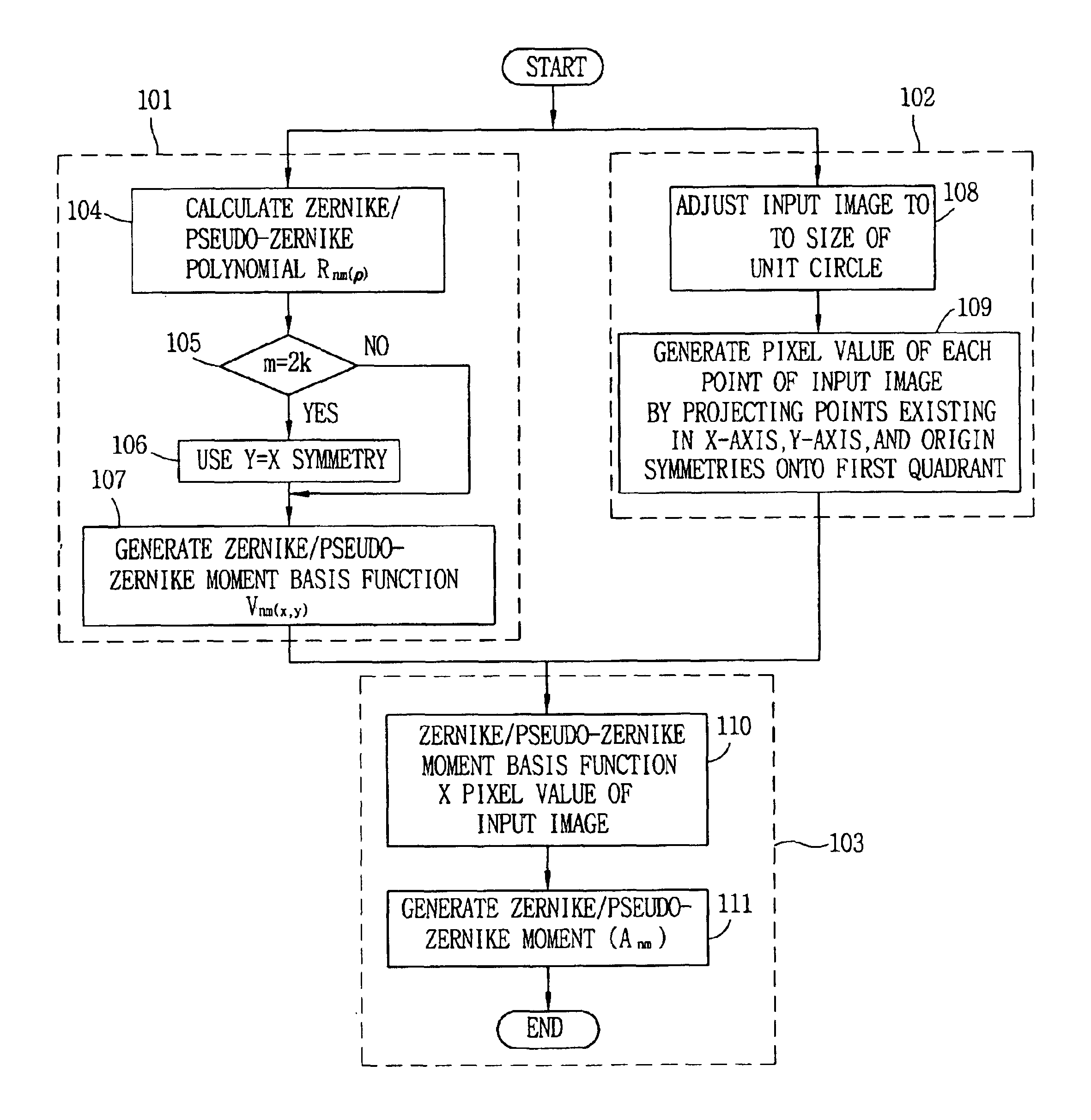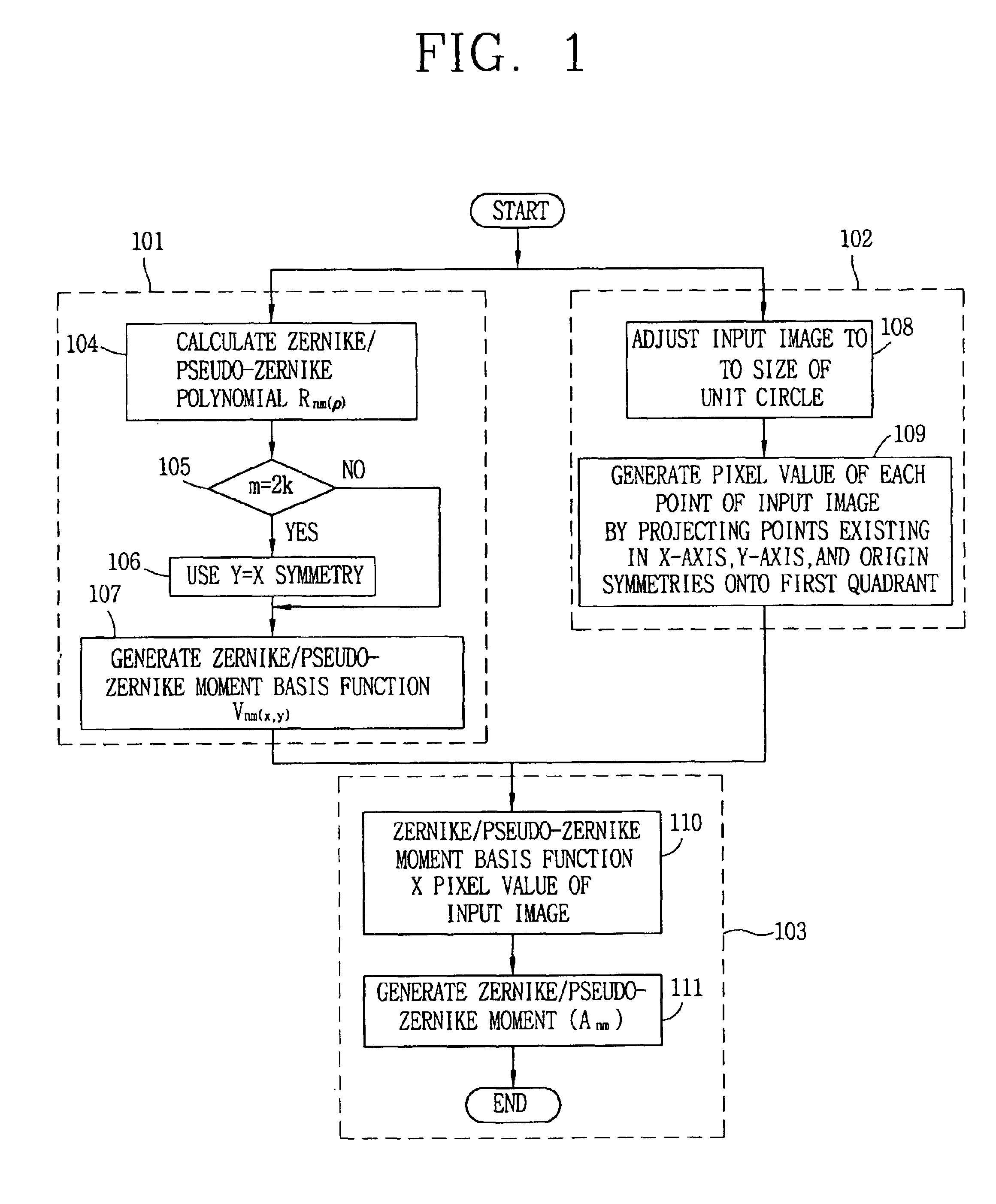Method for extracting Zernike/Pseudo-Zernike moment
a technology of pseudo-zernike and moment extraction, which is applied in the field of method for extracting a pseudo-zernike moment, can solve the problems of large amount of memory utilization, inability to extract an accurate moment for an image, and large moment extraction time, so as to achieve rapid moment extraction and reduce memory utilization
- Summary
- Abstract
- Description
- Claims
- Application Information
AI Technical Summary
Benefits of technology
Problems solved by technology
Method used
Image
Examples
first embodiment
[0022]FIG. 1 is a flow chart illustrating a method for extracting a Zernike / Pseudo-Zernike moment according to the present invention.
[0023]As illustrated therein, the method for extracting a moment includes the steps of: obtaining a Zernike / Pseudo-Zernike moment basis function in a first quadrant in step 101; obtaining a pixel value an input image in step 102; and extracting a Zernike / Pseudo-Zernike moment by multiplying the moment basis function with the pixel value of the input image in step 103.
[0024]The step 101 of obtaining a Zernike / Pseudo-Zernike moment basis function in a quadrant will now be described.
[0025]First, the real radial polynomial of a Zernike moment and the real radial polynomial of a Pseudo-Zernike moment are obtained by using mathematical formulas 1 and 2 in step 104.
[0026]Sine the real radial polynomial of the Zernike / Pseudo-Zernike moment is orthogonal in a unit circle of x2+y2=1, information redundancy is small.
[0027]The real radial polynomial Rnm'(ρ) of the...
second embodiment
[0042]FIG. 2 is a flow chart illustrating a method for generating a Zernike / Pseudo-Zernike moment according to the present invention.
[0043]As illustrated therein, the step of generating a Zernike / Pseudo-Zernike moment basis function in a first quadrant in steps 201 through 204 is the same as step 101 of FIG. 1.
[0044]In addition, the Zernike / Pseudo-Zernike moment basis function in the remaining second, third, and fourth quadrants is obtained by applying x-axis symmetry, y-axis symmetry, and origin symmetry to the Zernike / Pseudo-Zernike moment basis function in the first quadrant as obtained in steps 201 through 204.
[0045]Moreover, unlike FIG. 1, the pixel value of the input image is obtained for all the four quadrants without projecting the input image onto the first quadrant. Then, each pixel value is multiplied by the Zernike / Pseudo-Zernike moment basis function corresponding to the position of the pixel, and then the results thereof are added, thereby obtaining the Zernike / Pseudo-...
PUM
 Login to View More
Login to View More Abstract
Description
Claims
Application Information
 Login to View More
Login to View More - R&D
- Intellectual Property
- Life Sciences
- Materials
- Tech Scout
- Unparalleled Data Quality
- Higher Quality Content
- 60% Fewer Hallucinations
Browse by: Latest US Patents, China's latest patents, Technical Efficacy Thesaurus, Application Domain, Technology Topic, Popular Technical Reports.
© 2025 PatSnap. All rights reserved.Legal|Privacy policy|Modern Slavery Act Transparency Statement|Sitemap|About US| Contact US: help@patsnap.com



